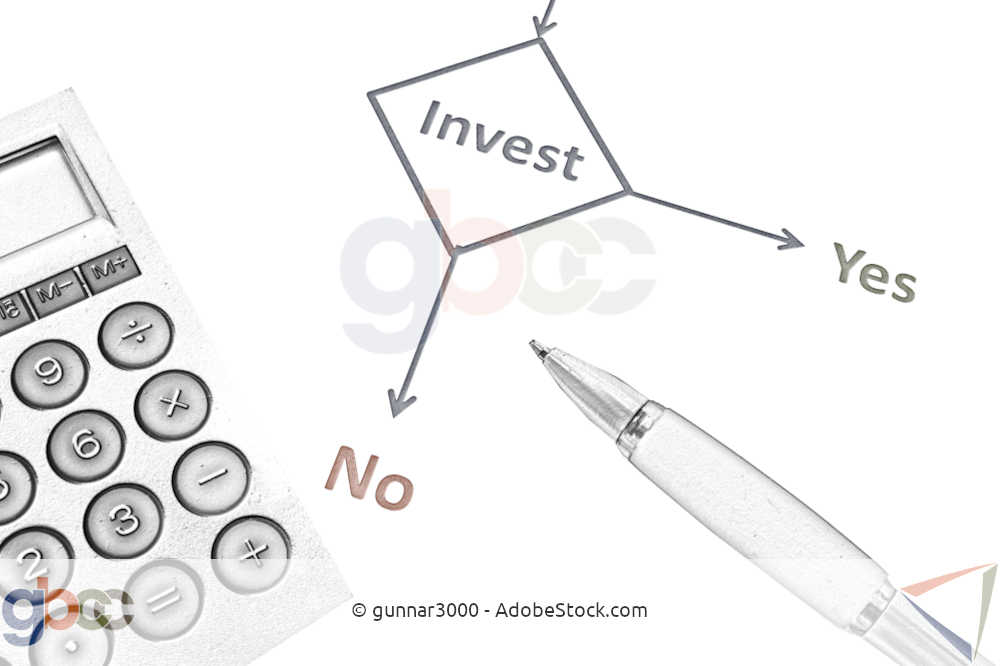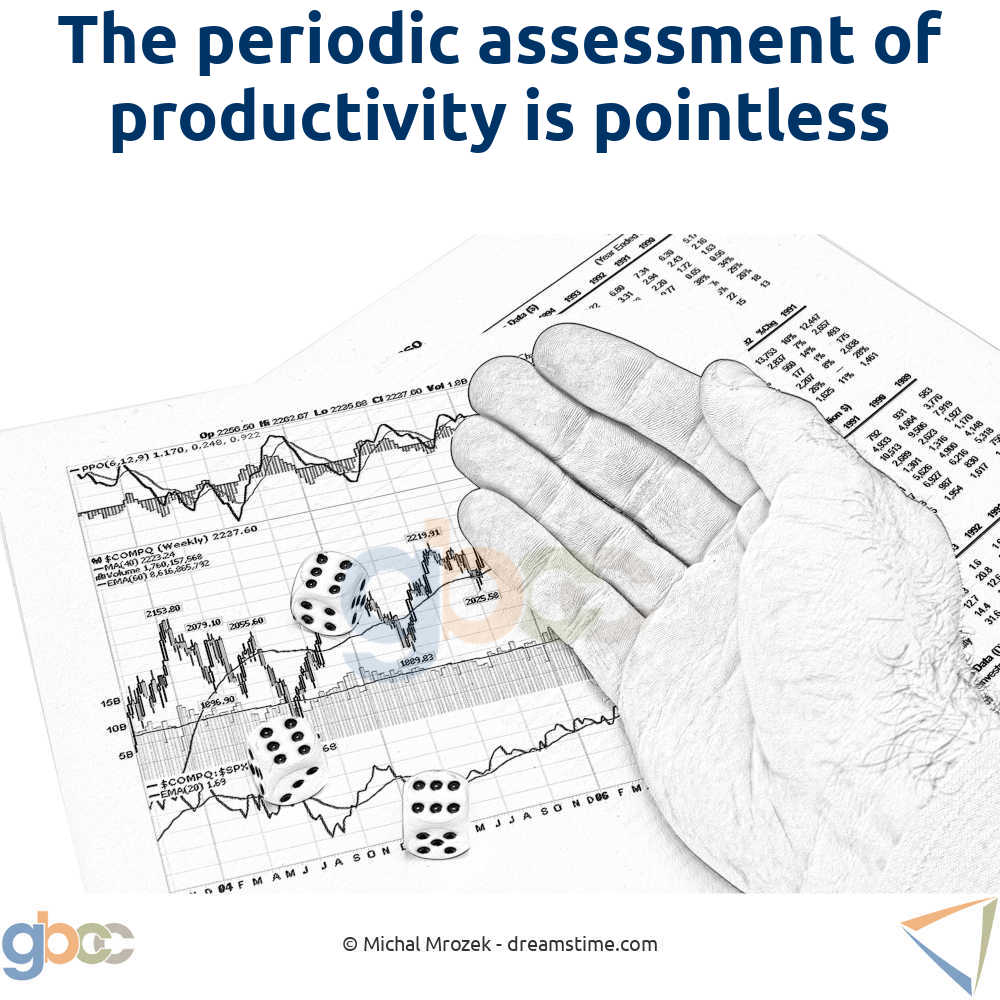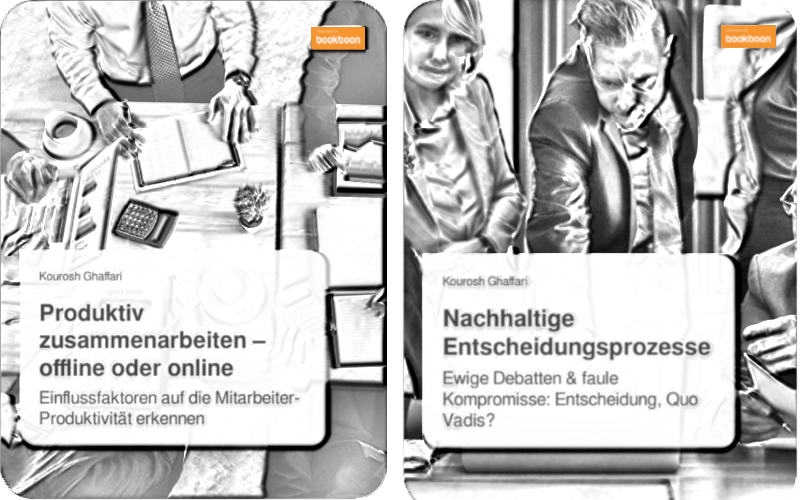A company’s reality happens in processes, not in periods. Only when we know the process times and costs, can we identify effective approaches to increasing productivity.
- Part 1: Effectiveness vs. organisational structure
- Part 2: Efficiency vs. agility
- Part 3: Productivity/economic profitability vs. period thinking
- Part 4: Strategic uncertainty vs. economic profitability
In the last article, we looked at the idea of efficiency and critically contrasted it with the idea of agility. In this part, we’ll continue with productivity and economic profitability.
Productivity and economic profitability
Productivity is a business ratio that describes the relationship between the output quantity (i.e., goods and services produced) and the input quantity (i.e., production factors required for this).
- For example, if 4,000 items are produced in 40 hours with 10 employees, the labour productivity is 400 items per employee or 100 items per hour.
Alternatively, costs (including opportunity costs) and revenues can be compared to assess “economic profitability”.
- If, for example, an average of €100 of revenue was generated per €80 of cost input in the last reporting period, the company has worked economically.

The same applies to productivity and profitability: whether the determined figure is good or bad can only be judged if a reliable comparative figure is available – either from a competitor or from a period before.
Relationship between productivity, effectiveness, efficiency
Based on the figures of the last reporting period, you now plan to organise the work of the staff differently or better. If you plan to:
- Produce 4,400 articles in 40 hours with 10 employees, then you might look for ways to increase the effectiveness of the work. Goal: to increase productivity.
- Produce 4,000 articles in only 36 hours with only 9 employees, then you might look for ways to increase the efficiency of the work. Same goal: to increase productivity.
Assessing the economic viability of investments to increase productivity
To increase productivity, companies invest in more modern machines and software.
While the return on investment of a production machine is relatively easy to calculate, it is a different story when investing in a software solution. How can the return on investment be calculated here, and is it even possible?

It is probably an open secret that the attention of decision-makers tends to be focused on the amount of the investment and the budget available. The consequences of their decisions for future processes are usually unknown or neglected.
An example would be if the decision-makers are deterred by the investment amount because they do not know and cannot take into account the savings in the processes: how many euros can we potentially save if our employees work faster in the future, exchange data more securely with each other, and waiting times and costly errors can be eliminated?
But the opposite can also be observed: prestige investments in software and technology that will not bring any identifiable or adequate return on investment.
Process costing is a must
A company’s reality takes place within its processes. One of the biggest cost factors in the processes is personnel expenses. We should always be aware of this: we do not conclude a fixed-price contract with our employees who guarantee us a predefined output. Rather, we buy time units; for example, 40 hours per week. The fixed salary we pay them is used to determine the hourly costs of the purchased time units.
The only relevant question is therefore what do the employees do in/with their time?
The time that employees need to carry out the processes is strongly influenced by human behaviour. For example, by how well the person can focus or manage their own time efficiently, but also by the behaviour of the decision-makers, the behaviour of colleagues and the behaviour of customers. And since humans change their behaviour frequently, the time needed always has a range of “from, on average, to”.
Only when we know this range and convert it into euros will we be able to determine if, and under what circumstances, the company has made an economic profit after receiving the money. And only then will we be able to identify possible ways to increase productivity.
Can economic profitability be assessed based on periodic figures?
Every company consists of many individual processes that can begin before or during a reporting period and end during or after the period.
Despite this banal logic, we assign specific periods within the company’s everyday life to be able to look at the average values of the completed business year or those of the past quarters or months.

That is not yet a problem because that is exactly what the tax office and lenders expect of us.
The problem only arises when we want to use the figures from these periods as an instrument for corporate management. We try (in vain) to use these figures to analyse how successful we’ve been with everyone working towards the same goal, and we want to draw conclusions for the future from them. Productivity, however, can only be calculated and increased through processes and not through specific periods.
To demonstrate how absurd purely arithmetical facts can be, let’s take the following order calculation as an example:
| Revenue | €1,000.– | ||
| (–) | Material & Wages | €600.– | -60 % |
| (=) | Gross margin | €400.– | 40 % |
| (–) | Salaries | €120.– | -12 % |
| (–) | Operating expenses | €100.– | - 10% |
| (=) | Earnings | €180.– | 18% |
This is specifically about the €120 imputed salaries. A figure that is determined in many companies by taking the average salaries for the year as a % rate of revenue or similar. Let us further assume that the average hourly rate per employee is €40/hour. In other words:
- For each order of €1,000, we assume for calculation purposes that we will need three hours for all administrative tasks (= €120 imputed costs ÷ €40/hour).
If client A only needs a single offer from us to make €1,000 in sales, we don’t hear from them again in between, and they end up paying their bill on time, then the assumption might well be reasonable.
Customer B, on the other hand, needs several offers. Negotiates several times. Adjusts the order. In between, they call us repeatedly to find out how things are going, and finally, we have to send them reminders until they finally pay their invoice. If we calculate customer B in the same way as customer A, then we have made a bad deal indeed.
Again, productivity must be process-based, periodic consideration alone is meaningless.
The last article in this series continues with “Uncertainty”: The right way to deal with opportunities and the risks when planning our path to the goal.
- Part 1: Effectiveness vs. organisational structure
- Part 2: Efficiency vs. agility
- Part 3: Productivity/economic profitability vs. period thinking
- ➟ Part 4: Strategic uncertainty vs. economic profitability

